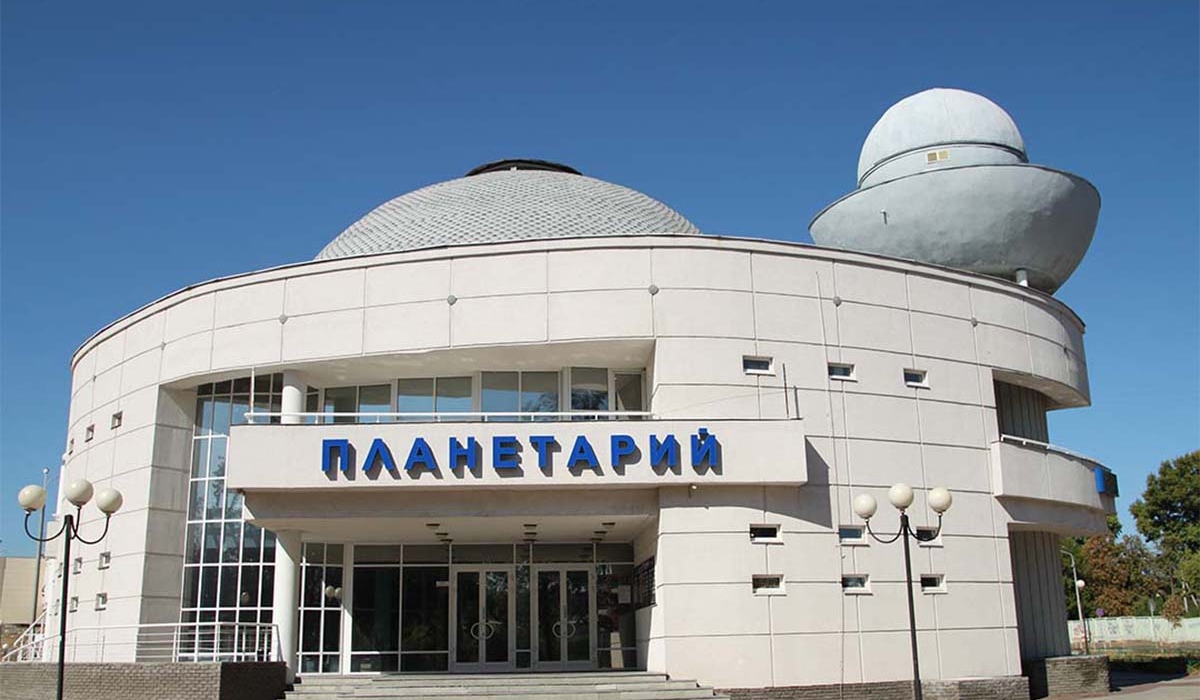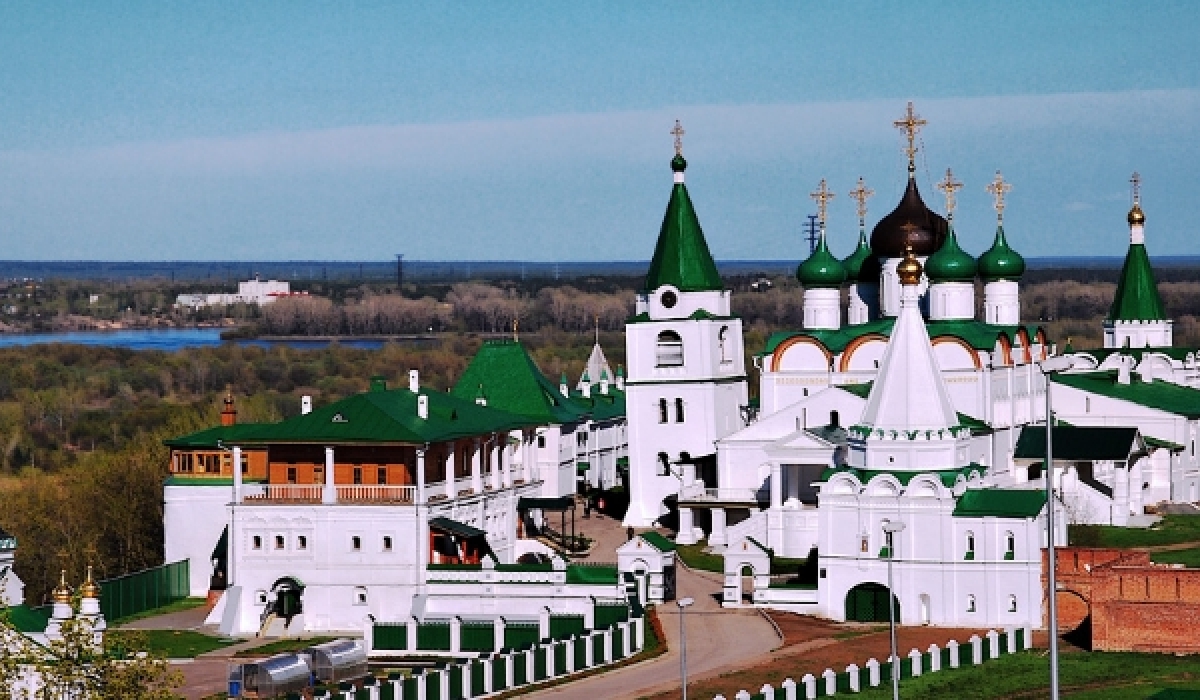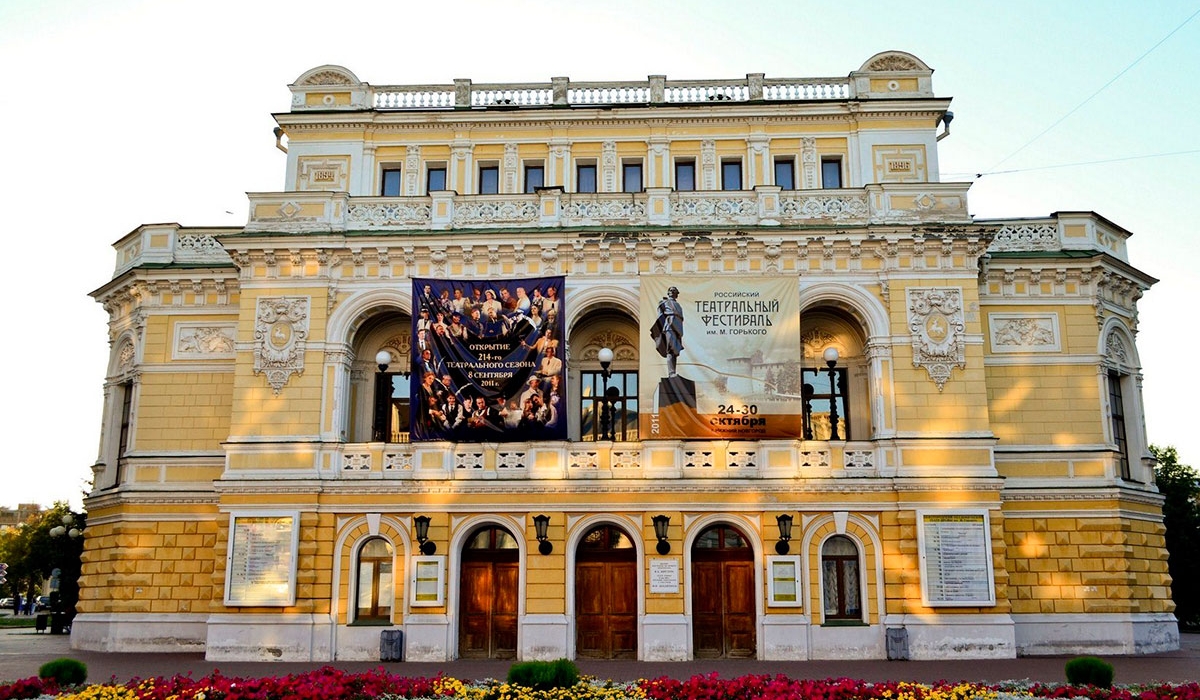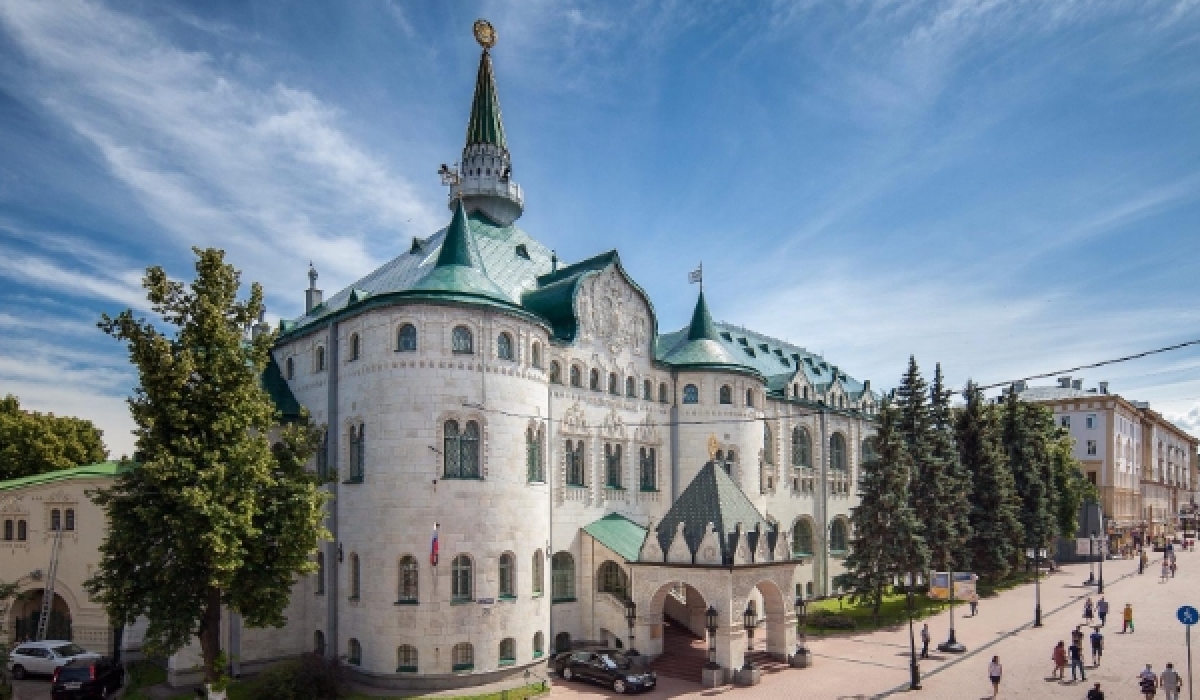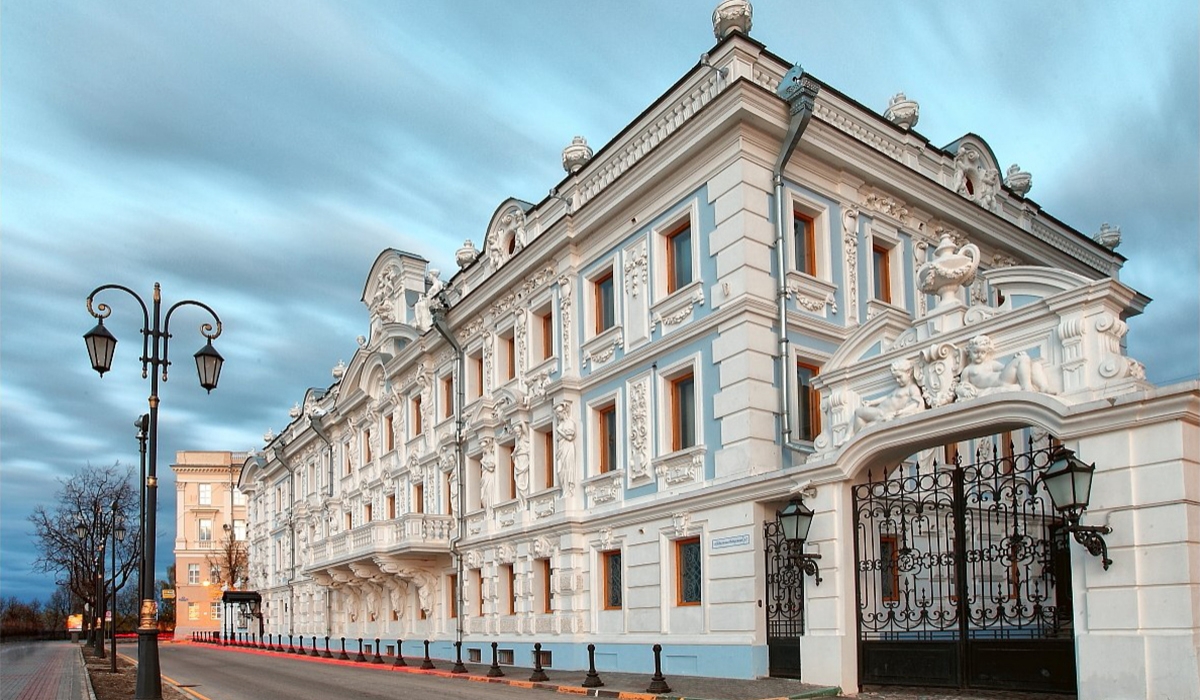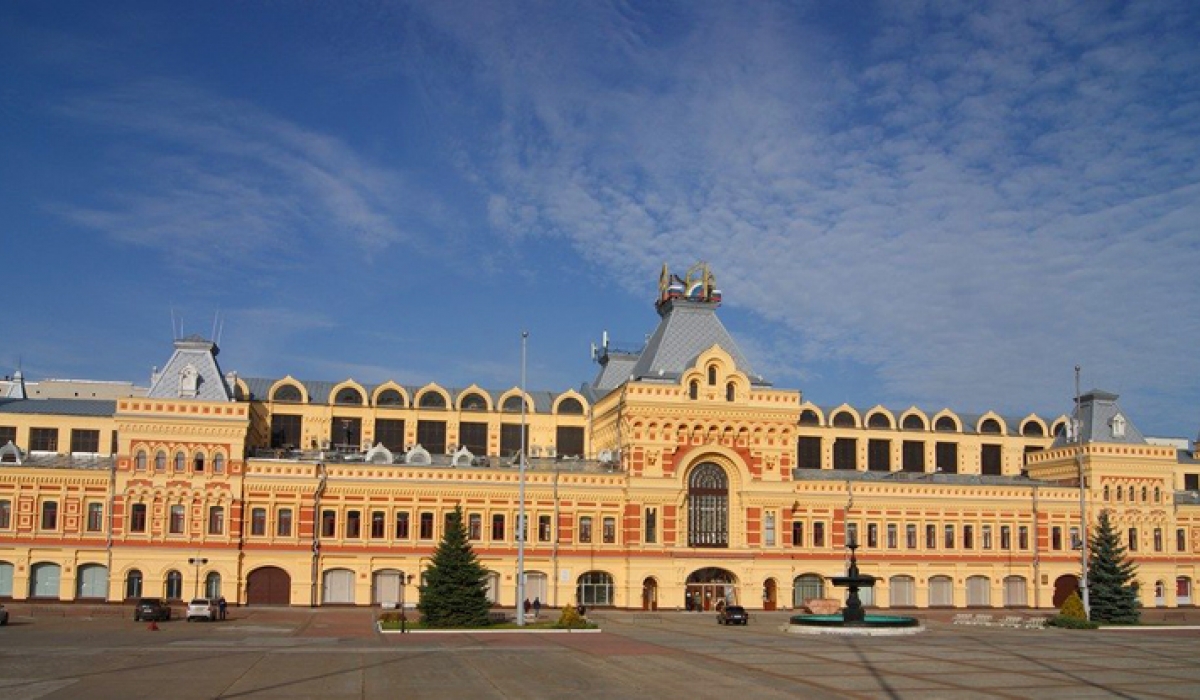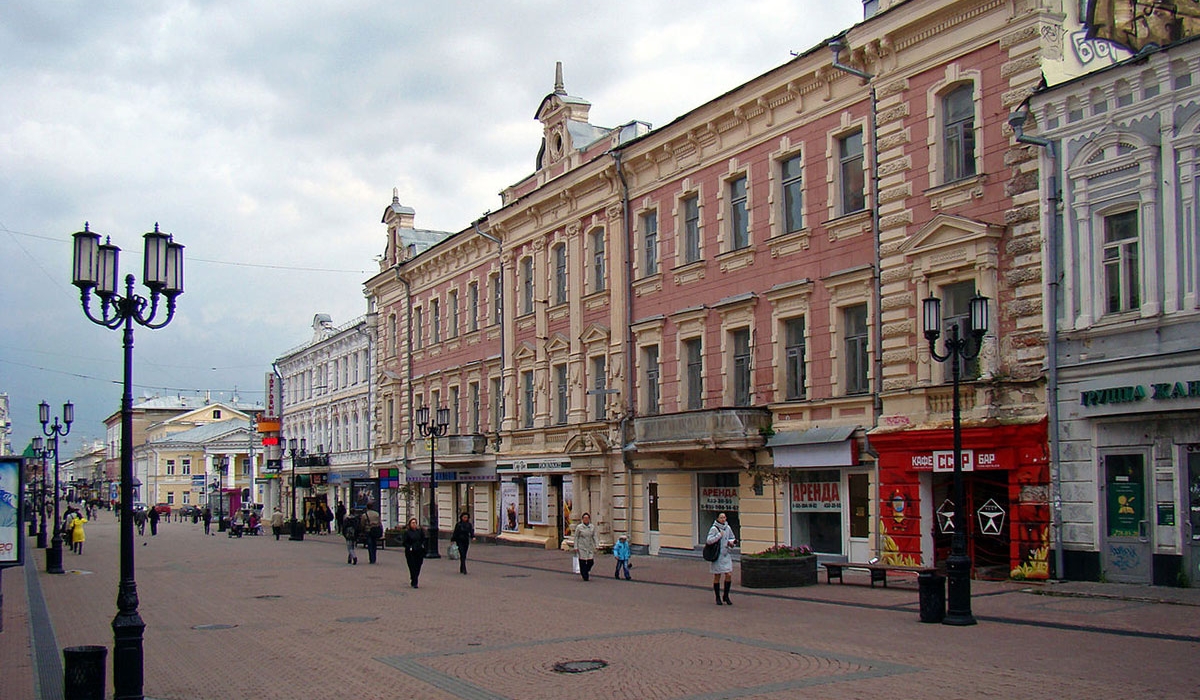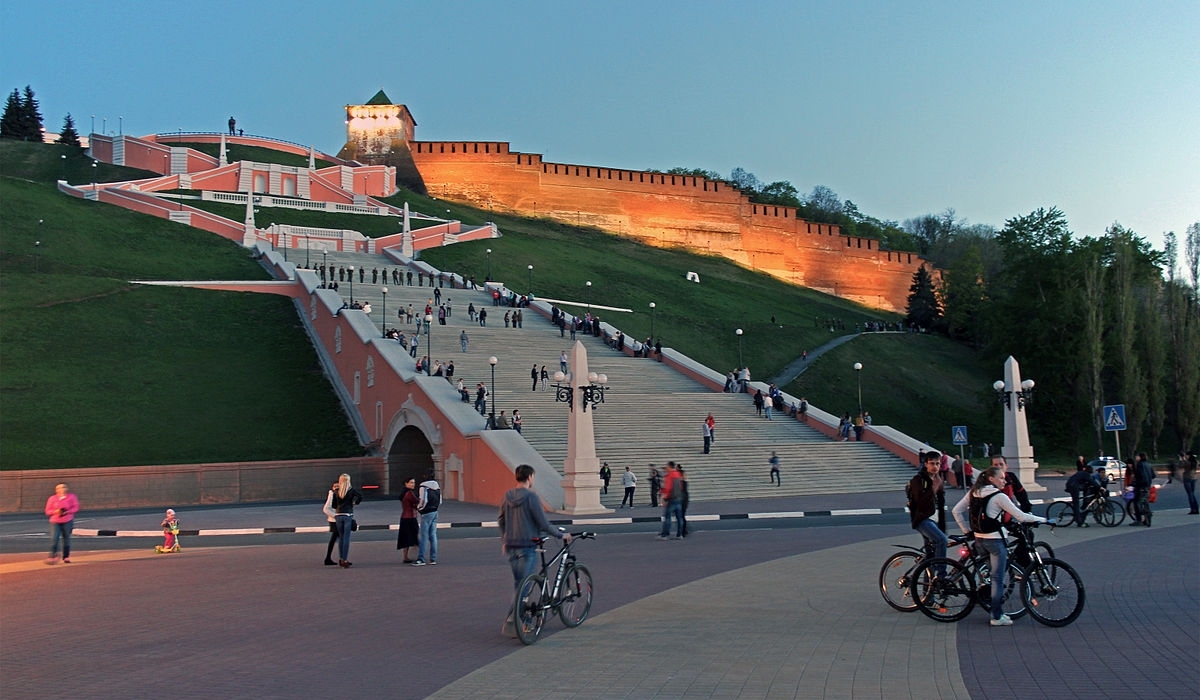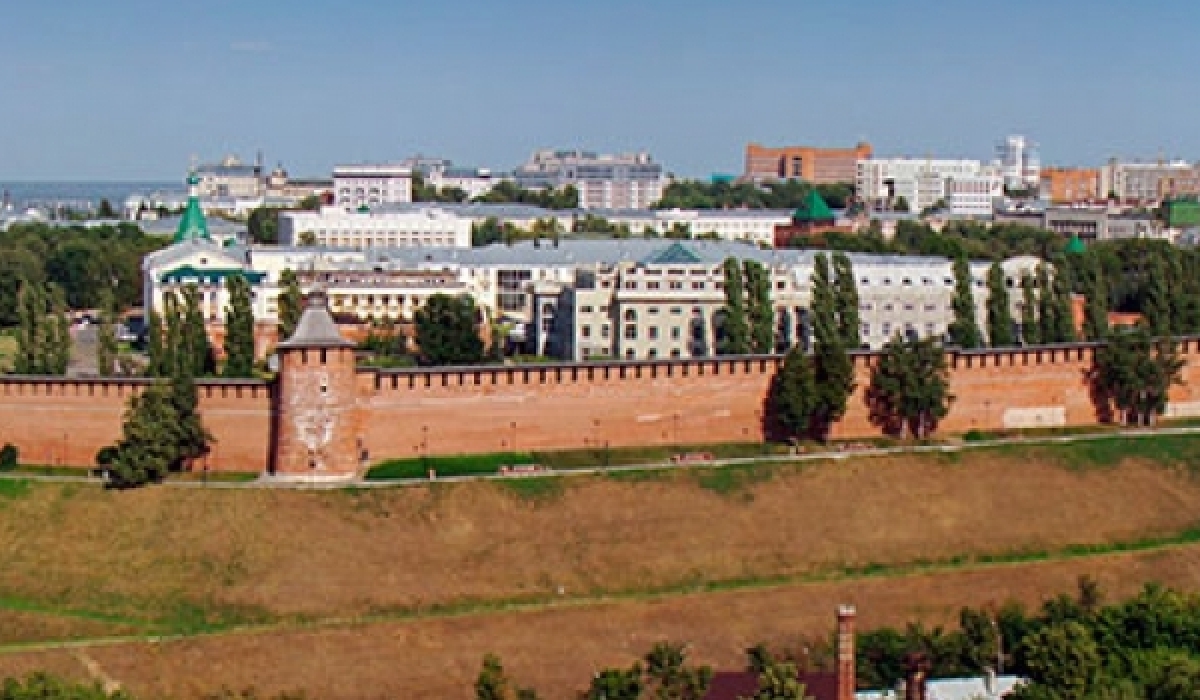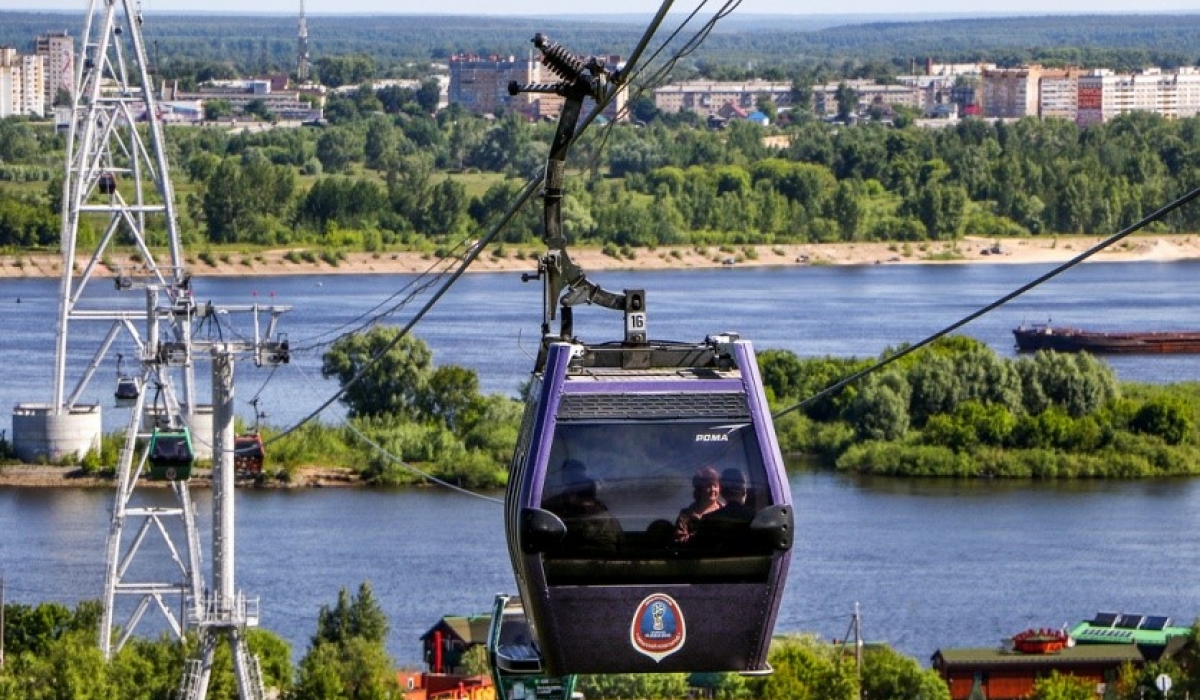
Cable car road
One of the most popular sights of the city – the cable car road – is located between Nizhny Novgorod and its neighbor, the town of Bor. This road is not only a transport, but also is one of the main tourist attractions of the city. There are 28 gondolas on route and it takes about 12.5 minutes not only to get from Nizhny Novgorod to Bor but to enjoy breathtaking views of Volga and Oka rivers, the Chkalov Stairs and Pechersky Ascension Monastery.
